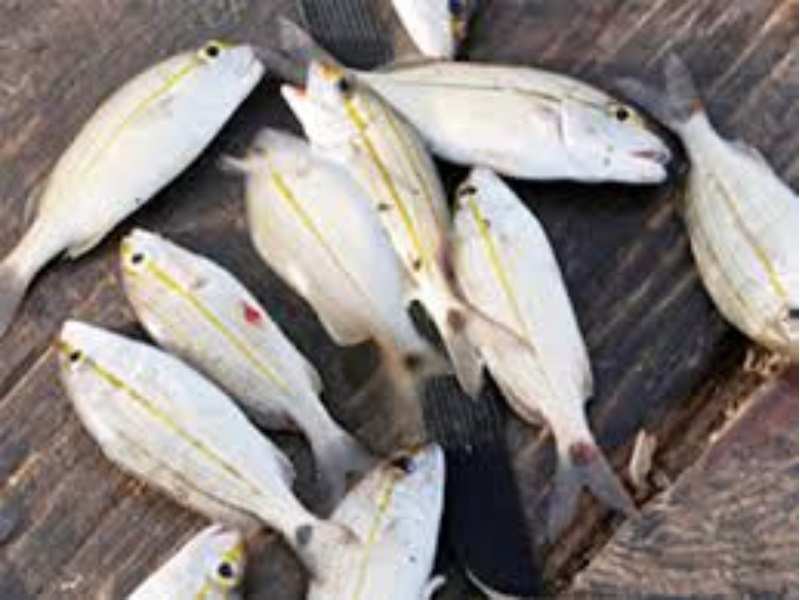 Fishery is a sector that has huge potential in India, which is surrounded by coastlines on three sides. This sector employs more than 14 million people. Coastal states and the adjoining areas are the major benefactors of this industry, which remains largely unorganised with high levels of insecurity and dangers dangling around the necks of people who are involved in it.
Fishery is a sector that has huge potential in India, which is surrounded by coastlines on three sides. This sector employs more than 14 million people. Coastal states and the adjoining areas are the major benefactors of this industry, which remains largely unorganised with high levels of insecurity and dangers dangling around the necks of people who are involved in it.
India has nearly 8,200 km of coastline with nearly 3,827 villages engaged in fishing as the main economic activity. There are nearly 2,000 fish trading centres in these areas. Fresh water reserves and reservoirs in the country also present enormous opportunities for fishing and trading activities. At the beginning of the decade, marine and freshwater resources together had fishing potential of about four million metric tonnes. Increasing yield year after year has been a positive indicator of the future growth potential in the field.
About 65 varieties of marine fish are harvested in the country, which are also of high commercial importance. This apart, Pelagic and mid-water species make for more than half the amount of the total fish production. India’s fish and prawn reach most South East Asian countries, the largest consumers of the sea delicacies.
To put things in perspective, India is world’s third largest producer of fish and comes next only to its neighbour China in terms of fish production. But the sector is facing heavy challenges in terms of innovation, expansion and regularisation of aspects related to fishing and trading, even while security concerns of fishermen, who get arrested by neighbouring countries such as Sri Lanka and Pakistan, remain a bone of contention between countries.
The potential and commercial success of fisheries should ideally make it a story worth emulating for other sectors. But the constant ignorance of governments has left the sector with a feeling resentment and abandonment. Although Prime Minister Narendra Modi had promised, during his election campaign, to set up a separate ministry for fisheries, it has not materialized yet.
India exported fish worth nearly Rs 18,856 crore and it stood at 9,28,251 tonnes in 2012 - 13. The European market presents excellent export potential. The United States of America, Japan and China also remain loyal customers of the Indian fish.
Forecast for the future is also equally bright. Marine Products Development Authority (MPEDA) estimates $4.2 billion target for Indian fish trade with Vannamei Shrimp and Black Tiger Shrimp, which are all season fish and sea food delicacies preferred worldwide.
Experts have been suggesting that the country stop taking pride in production capacity and look at sustainable methods to reach better commercial success with regard to the fishing industry. They opine that the fisheries sector should look at future growth, rather than just enjoying the catch with every passing year. Adopting responsible and sustainable fishery practices, bringing together agriculture and aquaculture farms to create agro-aqua farms, improving selling efforts inland and spreading fish quality literacy among fishermen to ensure hygienic practices are some of the focus areas. Prevalence of antibiotic residues in Indian fisheries stocks is a cause of worry for those who are looking at creating infrastructure to keep fishing sustainable, safe and healthy.
Any change in the ocean areas along the water table is bound to affect the produce. Consistent degradation of shorelines and loss of coral reefs have been major problems faced by India. Unless focus shifts to a comprehensive method of fishery, India stands the threat of losing its brownie points on this front.
 Having an regional accent can be bad for your interviews, especially an Indian one: study
Having an regional accent can be bad for your interviews, especially an Indian one: study
 Dirty laundry? Major clothing companies like Zara and H&M under scrutiny for allegedly fuelling deforestation in Brazil
Dirty laundry? Major clothing companies like Zara and H&M under scrutiny for allegedly fuelling deforestation in Brazil
 5 Best places to visit near Darjeeling
5 Best places to visit near Darjeeling
 Climate change could become main driver of biodiversity decline by mid-century: Study
Climate change could become main driver of biodiversity decline by mid-century: Study
 RBI initiates transition plan: Small finance banks to ascend to universal banking status
RBI initiates transition plan: Small finance banks to ascend to universal banking status


 Next Story
Next Story


